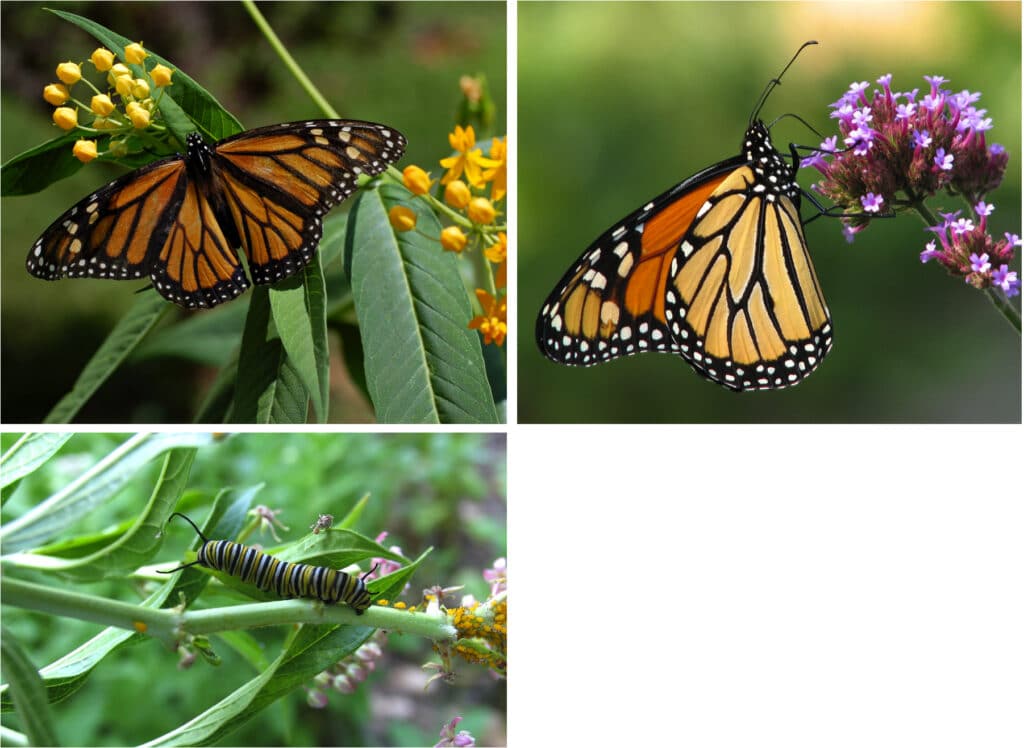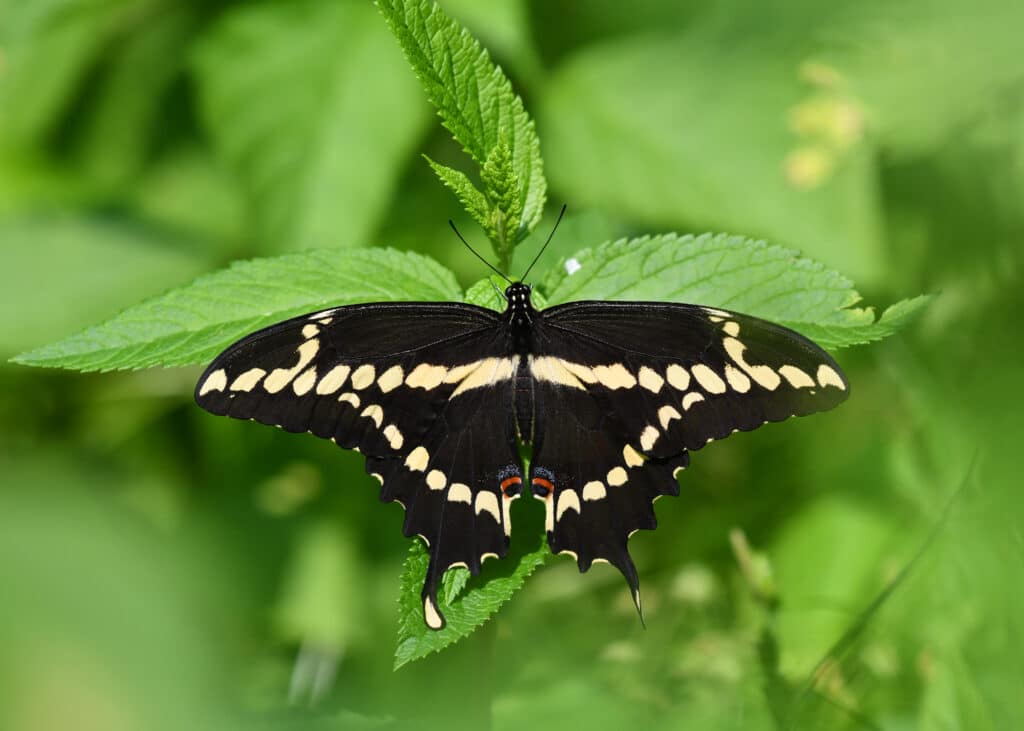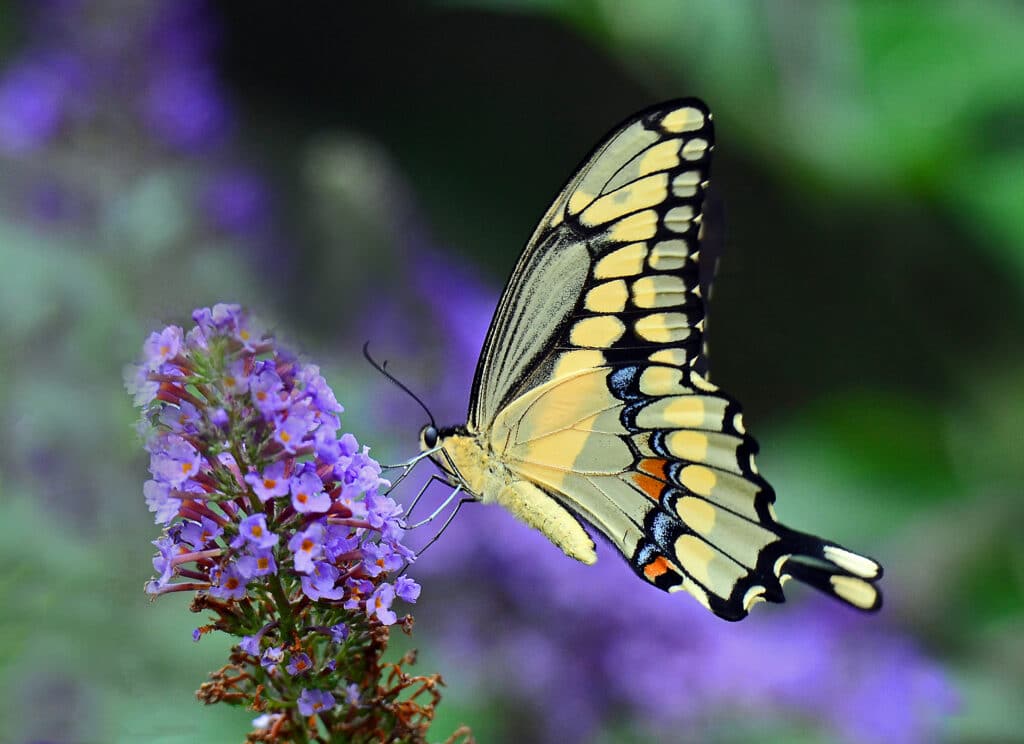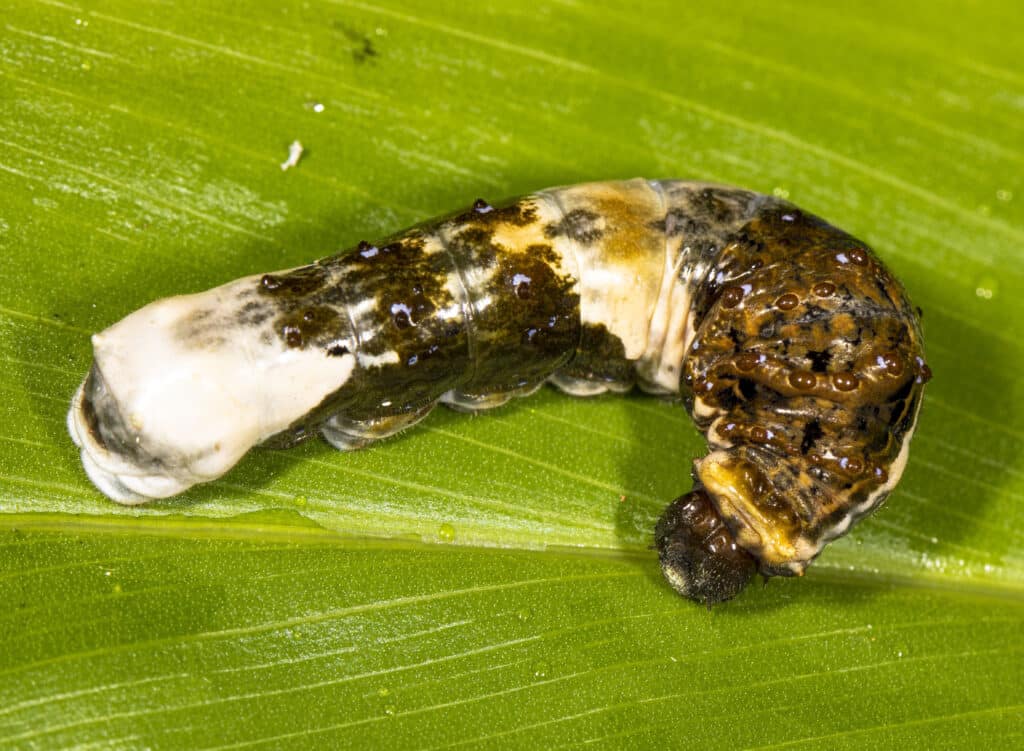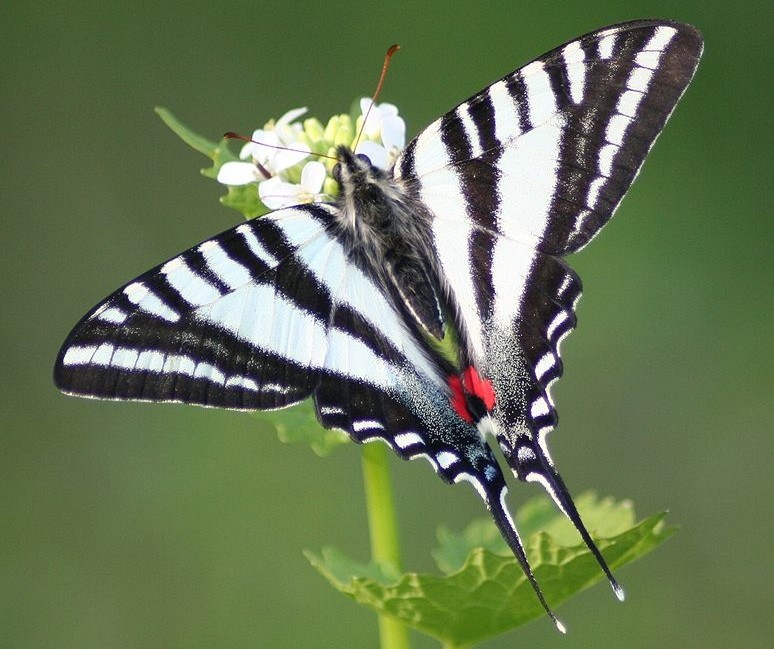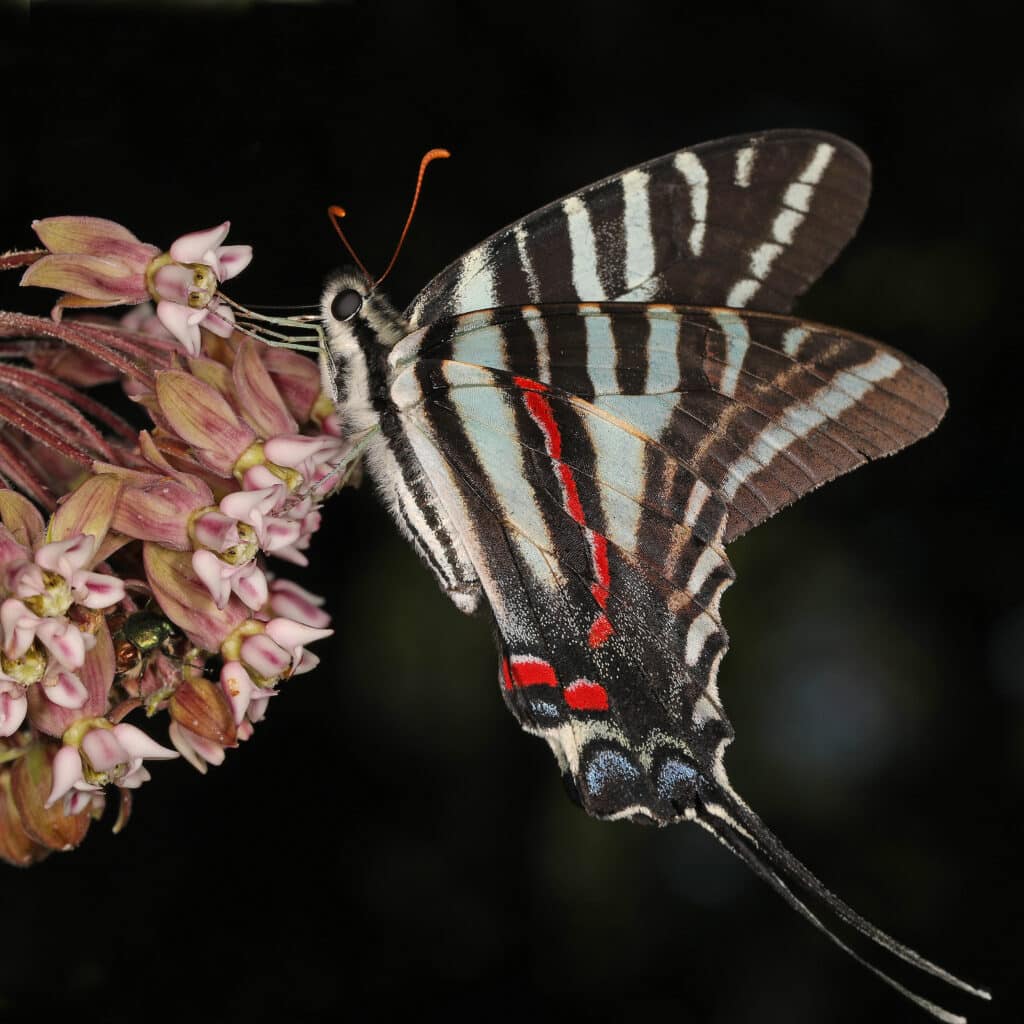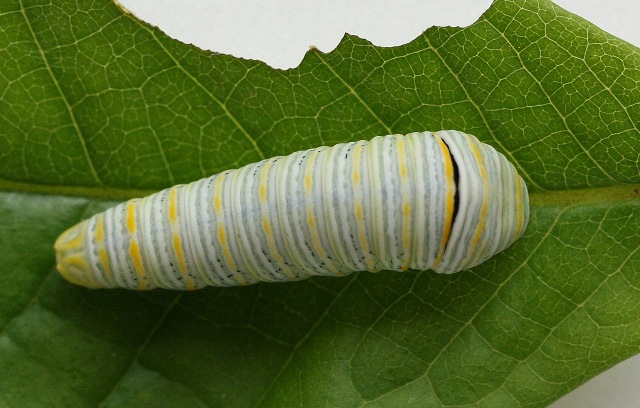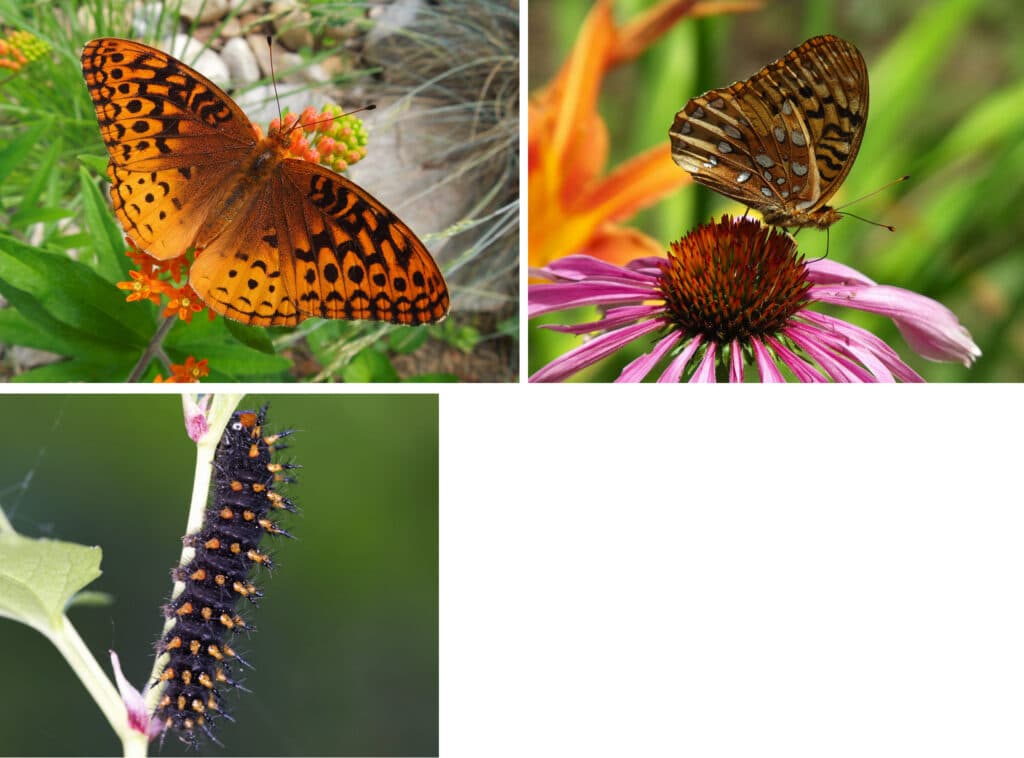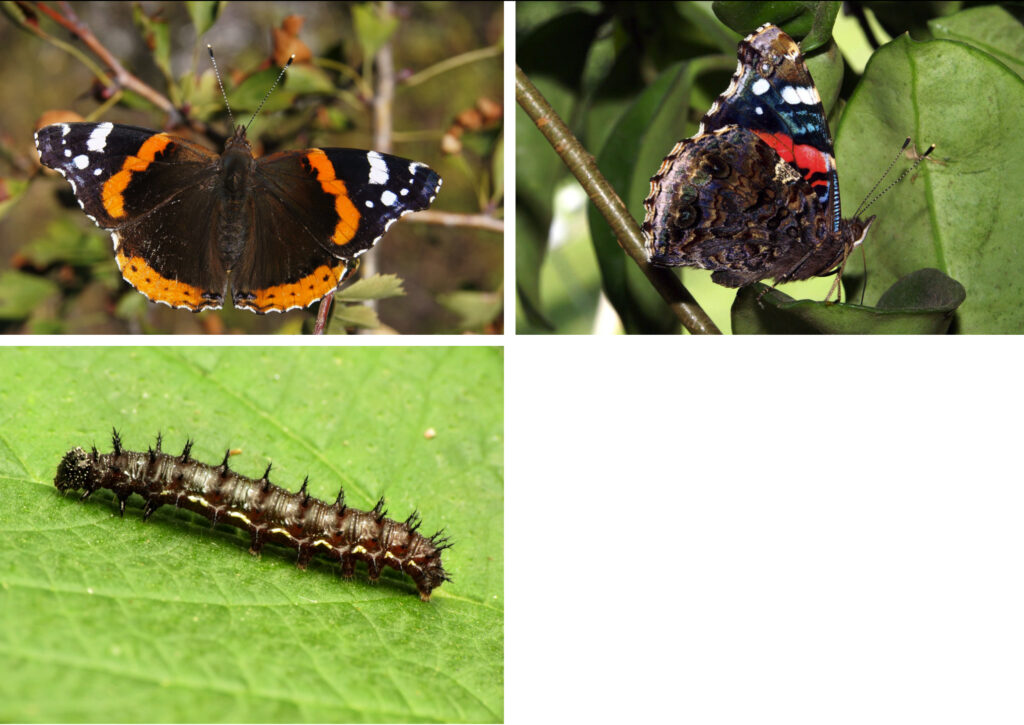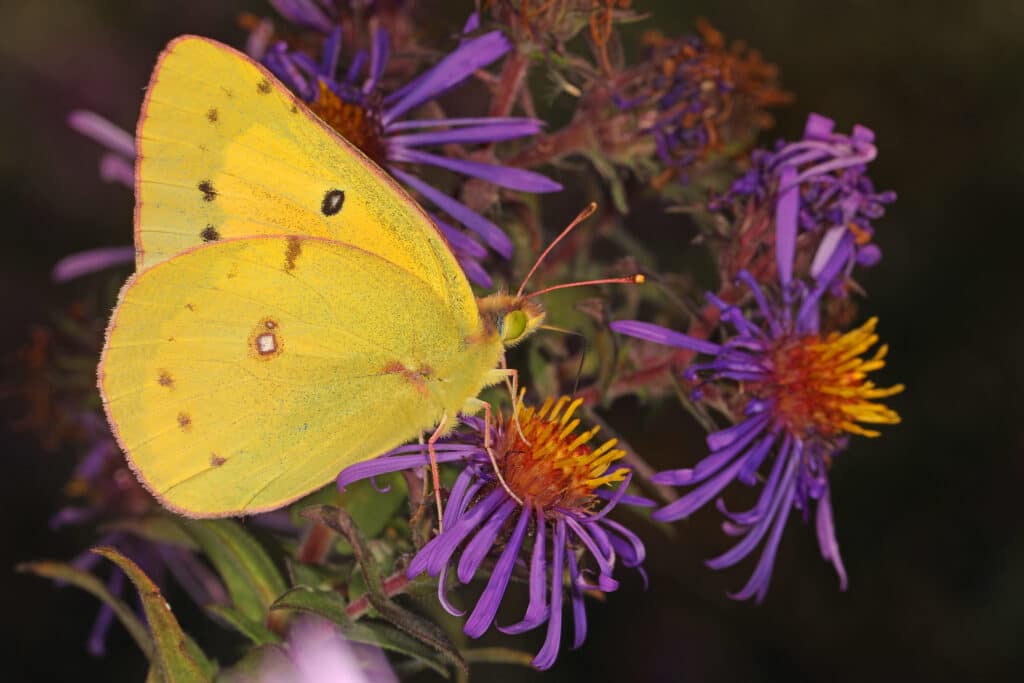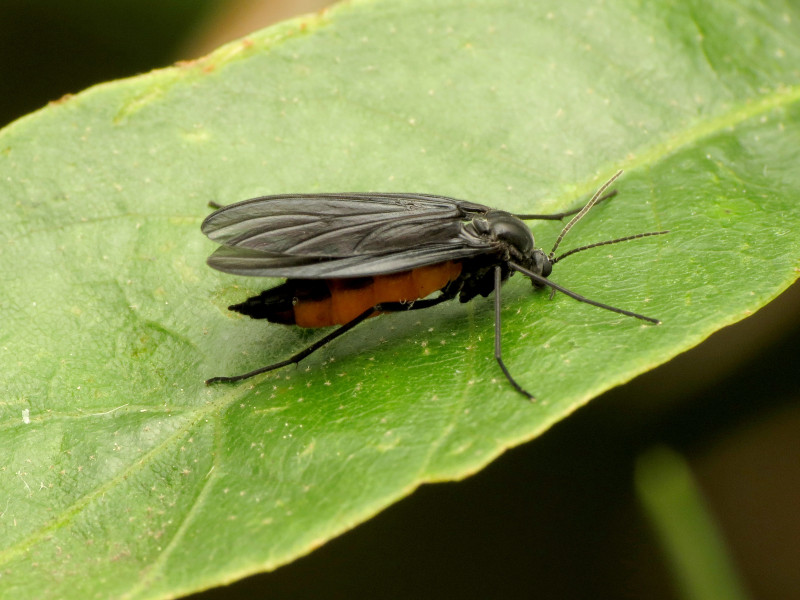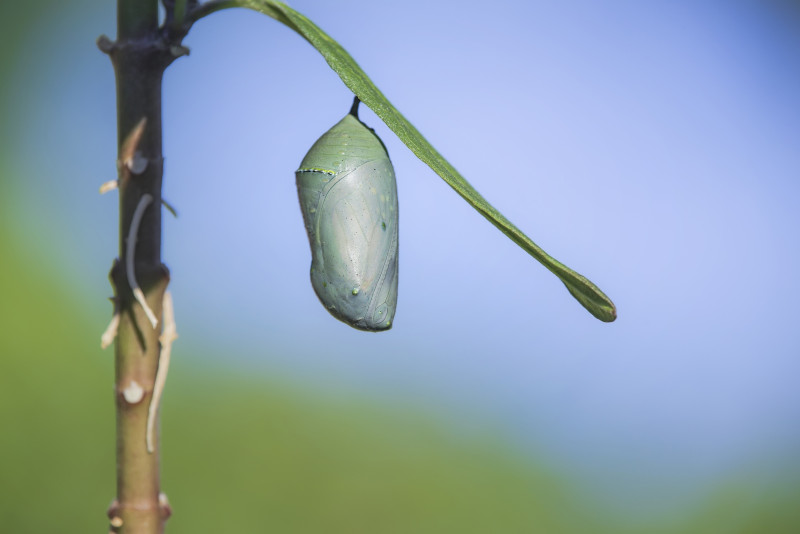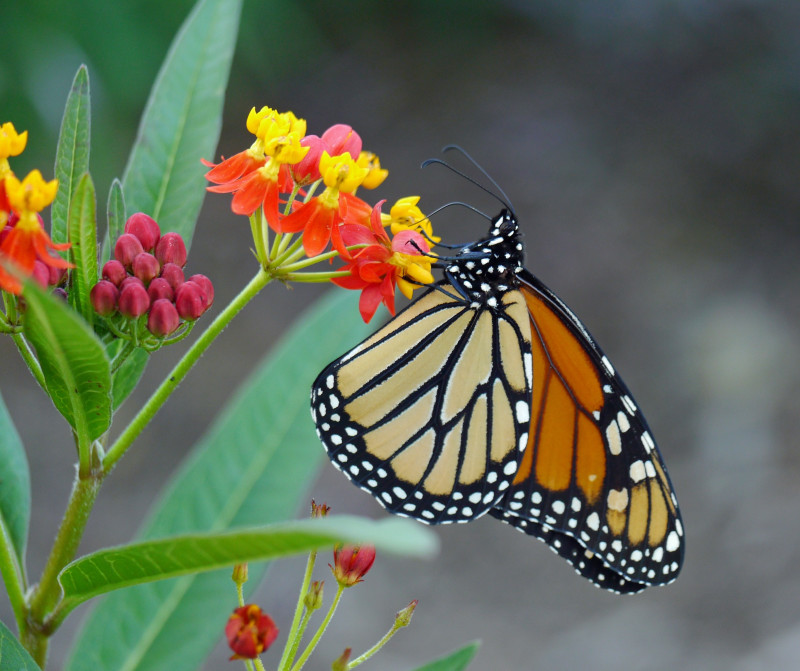Most butterflies are beautiful, but some stand above the others. Here are a few of the biggest and boldest, the ones we love most. Easy to spot and identify, they practically scream “Look at me” as they elegantly float from flower to flower in our gardens. Learn about these beauties, where they live, their habitat, favorite nectar and host plants, what months they fly, and one of their larval stages.
MONARCH
Nearly everyone’s favorite butterfly is the Monarch, Danaus plexippus. Millions of gardeners and wildlife watchers on both sides of the border eagerly anticipate their spring and fall migrations between the United States and Mexico. (A small population hibernates in southern California.) They begin their journey northward in March, with females pausing along the way to lay eggs on milkweed plants. They travel leisurely—they must not arrive at their destinations before milkweed plants leaf out because their caterpillars will need to feed on the leaves. Widespread destruction of milkweed plants is a serious threat to them.
Predators avoid eating Monarch adults, as well as their caterpillars, because their bodies store distasteful cardiac glycosides that are contained in the milkweed plants on which they feed. The bright coloring of the adult serves as a visual warning to predators.
Foods: Adults sip nectar from milkweeds and other plants, such as Butterfly Weed, Bee Balm, verbena, and phlox. Habitat: Urban and suburban gardens, croplands, prairies. Wingspan: 3.5–4 inches (8.9–10 cm). Pictorial of Monarch life cycle
(Photos above, clockwise from top-left: Derek Ramsey / Wiki; GFDL | Lisa Brown / Flickr; CC BY-NC 2.0. WW | CC BY-NC-SA 3.0)
QUEEN

Queen Butterflies, Danaus gilippus, can be confused with Monarchs when their wings are closed. They’re alike in another way, too: the Queen’s bold colors are a warning. If a bird tastes one—either the adult or caterpillar—it won’t do it again.
Queens (the males are also called Queens) range across the southern U.S., occasionally in the Plains, and down to Central America. They fly year-round in the South and from July to August in the northern part of their range.
Foods: Adults nectar on many flowers, including milkweeds, dogbanes, Southern Fogfruit, and Shepherd’s Needle. Host plants: Milkweeds. Habitat: Wherever milkweeds grow—urban and suburban gardens, meadows, fields, marshes, deserts, forest edges. Wingspan: 2.75–4.0 inches (6.9–9.9 cm).
(Photos above, clockwise from top-left: Roy Niswanger / Flickr; CC BY-SA 2.0 | Manjith Kainickara / Flickr; CC BY 2.0 | rawpixel.com; PD)
VICEROY
 |
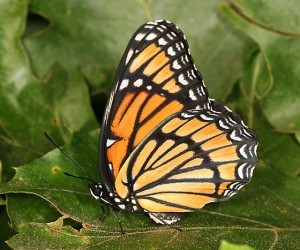 |
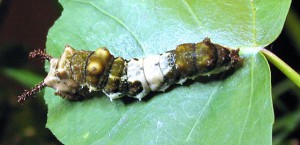 |
The Viceroy, Limenitis archippus, is another Monarch mimic, although smaller. They range from Canada’s Northwest Territories south along the eastern edge of the Cascade and Sierra Nevada mountains, and on to the eastern U.S. and south into Mexico. They produce two to three generations a year and overwinter as chrysalides2 wrapped within a rolled leaf tip for shelter.
GIANT SWALLOWTAIL
You won’t overlook the Giant Swallowtail, Papilio cresphontes! It’s the largest butterfly in the U.S. Wingspan: 4.0–6.25 inches (10–15.9 cm). They’re found across most of the country. In northern areas, they have two broods from May to September. They’re active year-round in southern Florida and the Deep South.
EASTERN TIGER SWALLOWTAIL, WESTERN TIGER SWALLOWTAIL
You’ve probably seen tiger swallowtails in your garden; they’re among the most common butterflies in the U.S. In some instances, the Eastern and the Western are so similar in appearance as to be indistinguishable to most of us. So how to tell them apart? By where you live: The Eastern Tiger, Papilio glaucus, is found from the Great Plains, Colorado, and Texas to the east coast. The Western Tiger, Papilio rutulus, is seen west of that line.
It’s no mystery how the Zebra Swallowtail, Protographium Marcellus,1 came by its name! And their stripes make it easy to identify them. Inhabitants of the eastern half of the U.S., they fly from late March to August in northern areas and into December in southern Florida. They produce up to four broods a year, depending on the climate. The caterpillars are black at first but develop stripes as they grow. They overwinter as chrysalides.
GREAT SPANGLED FRITILLARY
The Great-spangled Fritillary, Speyeria cybele, is the most common fritillary in the eastern U.S. They also are found in parts of the central Midwest and Northwest, as well as Canada from Alberta east to Nova Scotia. They have one brood per year, from mid-June to mid-September. Eggs are laid in late summer on or near violets. The newly hatched caterpillars eat their eggshell and then immediately go into hibernation. The following spring, they begin feeding on young violet leaves, but only at night.
Foods: Adults nectar from many flowers, including milkweed, thistle, ironweed, verbena, red clover, Joe-Pye Weed, and Purple Coneflower. Host plants: Various species of violets. Habitat: Open, moist places, including meadows, open woodlands, prairies, and suitable suburban and urban yards. Wingspan: 2.5–4.0 inches (6.4–10 cm).
(Photos above, clockwise from top-left: (Dave Govoni / Flickr; CC BY-NC-SA 2.0 | Figgins2165 / Wiki; CC BY 3.0 | Nicky Davis / EOL; CC BY 3.0)
PAINTED LADY
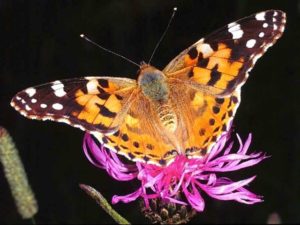 |
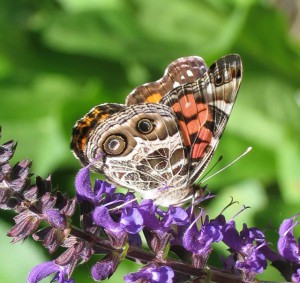 |
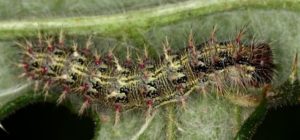 |
The Painted Lady, Vanessa Cardui, or American Painted Lady, is the most widely distributed butterfly in the world, inhabiting nearly all terrestrial environments on all continents except Australia and Antarctica. The Painted Lady looks similar to the West Coast Lady, Vanessa annabella, and the American Lady, Vanessa virginiensis.
In the Deep South, they’re active year-round. Elsewhere, they fly from May to October. They’re one of the very few butterflies that migrate, depending on climate patterns. And when they do, it’s in large numbers—thousands to millions of them. Not only that, but these delicate beauties can fly up to one hundred miles per day! Adults in mild winter areas apparently hibernate as pupae. In colder regions, they die with the first freeze.
Foods: Adults nectar on tree sap, decaying fruit, and various flowers, including thistle, blazing star, ironweed, Joe-Pye Weed, milkweed, and red clover. Host plants: They use more than one hundred, with favorites including mallows, legumes, and thistles. Caterpillars make nests for themselves by weaving leaves together with silk. Wingspan: 2.0– 3.0 (5.1–7.4 cm).
(Photos above, clockwise from top-left: Cesare Brizio / EOL; CC BY-NC 3.0 | WW; CC BY-NC-SA 3.0 | Miroslav Fiala / EOL; CC BY-NC 3.0)
RED ADMIRAL
The Red Admiral, Limenitis arthemis, is a common butterfly that ranges across the U.S., Canada, and as far south as Guatemala. They fly from March to October. Their summer generations are more intensely colored than winter populations. They typically have one brood in the north and two in the South. The winter habits of Red Admirals are something of a mystery. They’re known to migrate, but whether individuals travel the entire distance or only part way isn’t clear. It’s also unknown what proportion, if any, hibernate in their local area.
RED-SPOTTED PURPLE, WHITE ADMIRAL
The Red-spotted Purple (above left) and the White Admiral (above right) were once thought to be two different species because they look so similar. But, researchers have concluded they’re the same butterfly, just with two different appearances, and a subspecies, Limenitis arthemis, of the Red Admiral. The two forms are primarily found in the eastern half of the U.S. and southern Canada, with a few isolated populations in Arizona, New Mexico, and west Texas. The Red-spotted is seen more often in the southern parts of their range than the White Admiral. They have two broods from April to October and overwinter as chrysalides.
Foods: Adults nectar on flowers of spirea, privet, and viburnum, as well as on sap, rotting fruit, carrion, and dung. Host plants: Caterpillars feed on birch trees primarily, but also on hawthorn, apple, native cherry, cottonwood, and others. Habitat: Urban and suburban gardens, deciduous and mixed forests, valleys, and coastal plains. Wingspan: 2.25–4 inches (5.7–10 cm).
ORANGE SULPHUR, Colias eurytheme
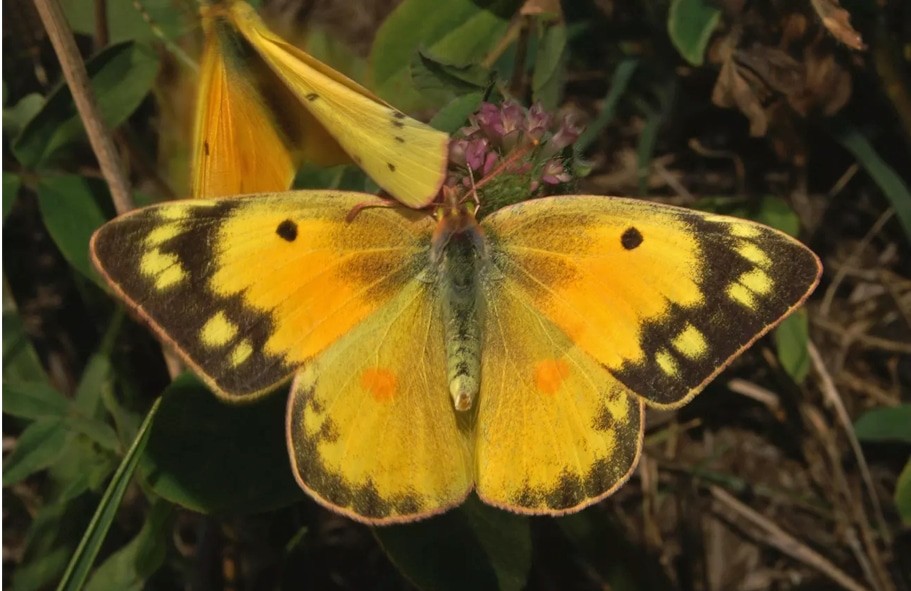 |
|
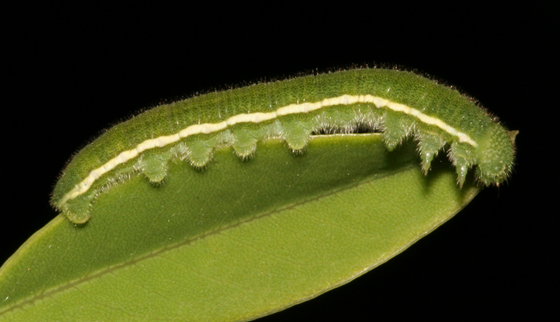 |
The Orange Sulphur, Colias eurytheme, was originally a western species but moved eastward with the planting of alfalfa fields and clear-cutting of forests. They’re now one of North America’s most widespread and common butterflies. They fly from June to October in the north and have two to three broods. In the South, they fly from March to November (even into December in some areas) and have four or five broods. They overwinter as chrysalides.
Their coloration is highly variable. Females range from white or pale to bright yellow or orangish on the upper surface, while males are yellow to bright orange. Males lack the tiny white spots that run along the outer edge of the female’s wings, as you can see in the photo of a female above, top-left.


